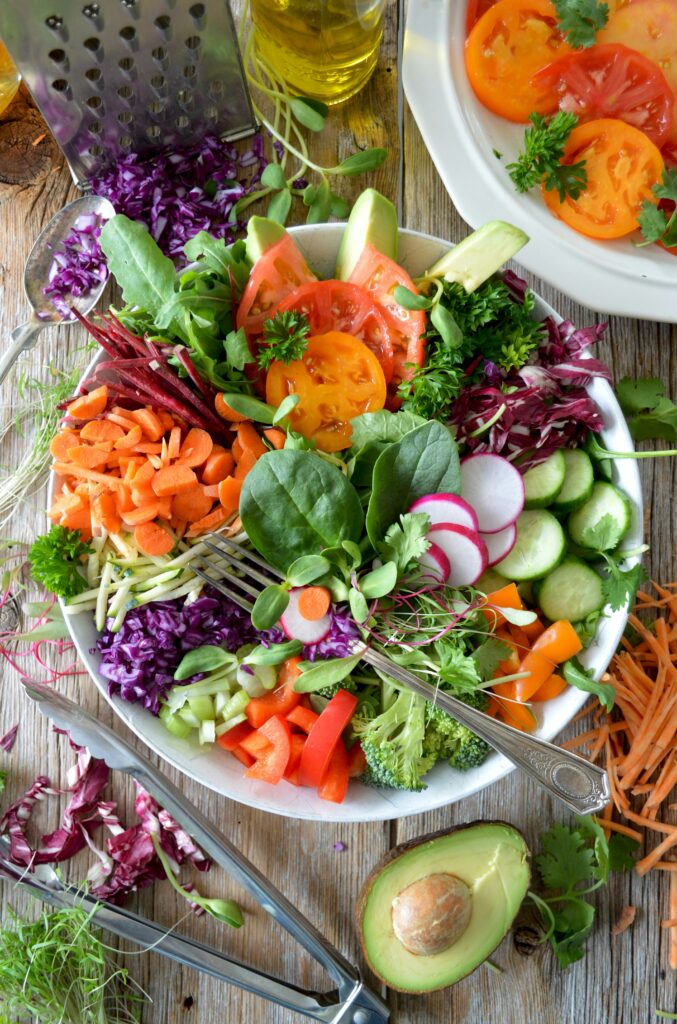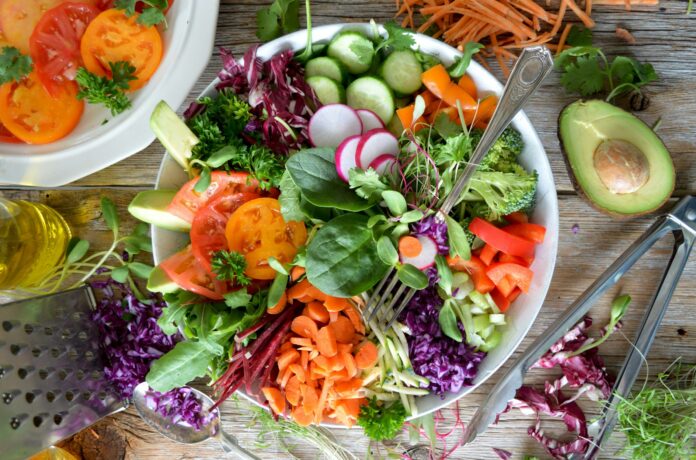The Paleo diet, short for “Paleolithic” diet, aims to emulate the eating patterns of our ancestors from the Paleolithic era. Often referred to as the “caveman diet,” the Paleo approach focuses on eating whole, unprocessed foods that could have been hunted, fished, or gathered thousands of years ago. Proponents believe that these food choices support optimal health, aligning with human evolutionary biology. This article covers the fundamentals, benefits, foods to eat, and tips for getting started with the Paleo diet.
What is the Paleo Diet?
The Paleo diet eliminates processed foods, refined sugars, dairy, and grains, promoting a simpler, more nutrient-dense approach. Instead, the diet emphasizes meats, fish, vegetables, fruits, nuts, and seeds—the kind of whole foods our ancestors relied on.
At its core, the Paleo diet is about going back to the basics. It encourages eating in a way that supports natural body functions, focusing on nutrient-dense, whole foods that are low in additives and high in fiber, healthy fats, and proteins.
Key Components of the Paleo Diet:
- Lean Proteins: Meat, fish, and eggs provide the basis for muscle maintenance and other bodily functions.
- Fresh Vegetables and Fruits: These provide essential vitamins, minerals, and fiber.
- Healthy Fats: Sourced from nuts, seeds, olive oil, and avocados.
- Nutrient-Dense Foods: Rich in essential nutrients without refined sugars or chemicals.
Health Benefits of the Paleo Diet
The Paleo diet has a range of potential benefits, from weight management to improved heart health. Here are some of its main advantages:
- Weight Loss and Management
By eliminating processed foods and refined sugars, the Paleo diet can reduce overall caloric intake naturally. The high-protein content keeps you fuller longer, helping to curb cravings and reduce overeating. Combined with high-fiber vegetables and low-glycemic fruits, it’s a diet that supports natural weight management. - Blood Sugar Stabilization
With a focus on low-carb fruits, vegetables, and protein, the Paleo diet can help to stabilize blood sugar levels. This can be particularly beneficial for people with type 2 diabetes or insulin resistance, as it reduces blood sugar spikes and crashes. - Improved Digestion
The elimination of processed foods, grains, and dairy may help to reduce digestive issues such as bloating, gas, and discomfort. By focusing on whole, easily digestible foods, the Paleo diet supports gut health and can alleviate symptoms of IBS or other digestive conditions. - Heart Health
The Paleo diet emphasizes heart-healthy fats from sources like fish, nuts, and olive oil, which can lower LDL cholesterol and improve overall heart health. The focus on whole foods helps reduce the intake of trans fats and refined oils, which can increase the risk of cardiovascular disease. - Reduced Inflammation
Foods high in antioxidants, such as fruits, vegetables, and omega-3-rich fish, contribute to reducing chronic inflammation, which is linked to various health conditions, including arthritis, heart disease, and autoimmune disorders. - Enhanced Energy Levels
By avoiding processed carbs and refined sugars, the Paleo diet provides consistent energy throughout the day without the “sugar crashes.” Its emphasis on healthy fats and proteins provides sustained energy that supports both physical and mental performance.
Key Foods in the Paleo Diet
The Paleo diet focuses on whole foods that offer maximum nutrition without added sugars or artificial ingredients. Here’s a breakdown of Paleo-approved foods:
Lean Proteins
- Grass-Fed Meats: Beef, lamb, pork, and bison provide protein, iron, and essential amino acids.
- Poultry: Chicken, turkey, and duck are excellent sources of lean protein.
- Fish and Seafood: Salmon, trout, sardines, and shellfish offer high omega-3 content for heart and brain health.
- Eggs: Pasture-raised or free-range eggs offer protein and healthy fats.
Fresh Vegetables and Fruits
- Non-Starchy Vegetables: Spinach, kale, broccoli, and Brussels sprouts are low in carbs and high in vitamins and fiber.
- Berries: Blueberries, strawberries, and raspberries offer antioxidants without high sugar content.
- Low-Glycemic Fruits: Apples, oranges, and avocados provide nutrients with minimal impact on blood sugar.
Nuts and Seeds
- Nuts: Almonds, walnuts, cashews, and Brazil nuts provide fiber, healthy fats, and protein.
- Seeds: Pumpkin, sunflower, chia, and flaxseeds add fiber, healthy fats, and nutrients.
Healthy Fats
- Olive Oil: Rich in monounsaturated fats, olive oil is a staple of heart-healthy diets.
- Coconut Oil: Offers medium-chain triglycerides, which provide quick energy and aid in fat-burning.
- Avocados: Contain heart-healthy monounsaturated fats, fiber, and potassium.
Foods to Avoid on the Paleo Diet
Certain food groups and processed items are excluded from the Paleo diet to align with ancestral eating habits. These include:
- Dairy Products: Milk, cheese, yogurt, and butter are not part of the traditional Paleo diet.
- Grains: Wheat, oats, rice, and barley are avoided, as they are high in carbohydrates and were not widely consumed by early humans.
- Legumes: Beans, lentils, and peanuts are excluded due to their antinutrient content, which may inhibit nutrient absorption.
- Refined Sugars and Processed Foods: Candy, soda, pastries, and other highly processed foods are not allowed.
- Refined Vegetable Oils: Corn, soybean, and canola oil are high in omega-6 fatty acids and can increase inflammation.
How to Start a Paleo Diet
Transitioning to a Paleo lifestyle can be simple and rewarding. Here are some steps to help you start:
- Eliminate Processed Foods
Start by removing processed foods, sugars, and refined oils from your diet. Focus on whole, nutrient-dense foods. - Plan Your Meals
Creating a weekly meal plan with Paleo recipes makes it easier to stick to the diet and reduces the temptation to stray from your goals. - Stock Up on Paleo Staples
Keep your kitchen stocked with Paleo essentials, like grass-fed meats, organic vegetables, and healthy fats, so you’re always prepared to make a Paleo-friendly meal. - Practice Mindful Eating
Eating mindfully is a fundamental part of the Paleo philosophy. By listening to your body’s hunger and fullness cues, you can avoid overeating and improve digestion. - Experiment with Paleo Recipes
Paleo recipes are full of creativity and flavor. Try roasting vegetables with olive oil, grilling grass-fed steaks, or preparing a Paleo-friendly smoothie with almond milk, berries, and chia seeds.
Sample Paleo Diet Meal Plan
Here’s a sample day on the Paleo diet to give you a sense of how balanced and delicious it can be:
- Breakfast: Scrambled eggs with spinach, avocado, and a side of fresh berries.
- Lunch: Grilled chicken salad with mixed greens, cherry tomatoes, cucumber, and a dressing of olive oil and balsamic vinegar.
- Dinner: Baked salmon with a side of roasted asparagus and sweet potato.
- Snacks: A handful of mixed nuts, or apple slices with almond butter.
Common Challenges and Tips for Success
- Overcoming Cravings for Processed Foods: The first few weeks may be challenging as you adjust to a whole-food approach. Keep healthy Paleo snacks on hand and try making Paleo versions of your favorite foods.
- Finding Paleo-Friendly Options on the Go: When dining out, look for grilled meats and vegetable sides. Avoid breaded or fried items, and ask for olive oil or vinegar dressings.
- Maintaining Variety: Experiment with a range of recipes to keep your meals exciting. Use different herbs and spices to add flavor without extra calories or processed ingredients.
The Paleo diet is more than just a diet; it’s a lifestyle that emphasizes whole, nutrient-dense foods and natural eating patterns. With its focus on lean proteins, fresh vegetables, healthy fats, and minimal processed foods, the Paleo diet can lead to better health, energy, and well-being. By taking a few steps to start your Paleo journey, you’ll be embracing a way of eating that nourishes both body and mind, reconnecting you with foods that support natural health and vitality.

Views: 12






